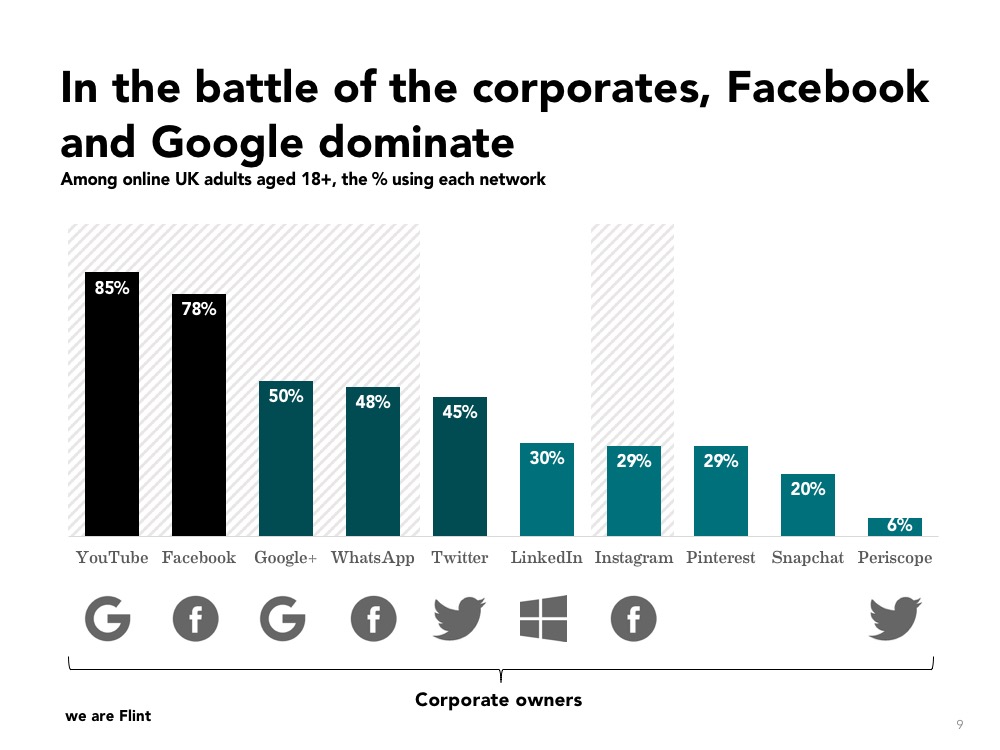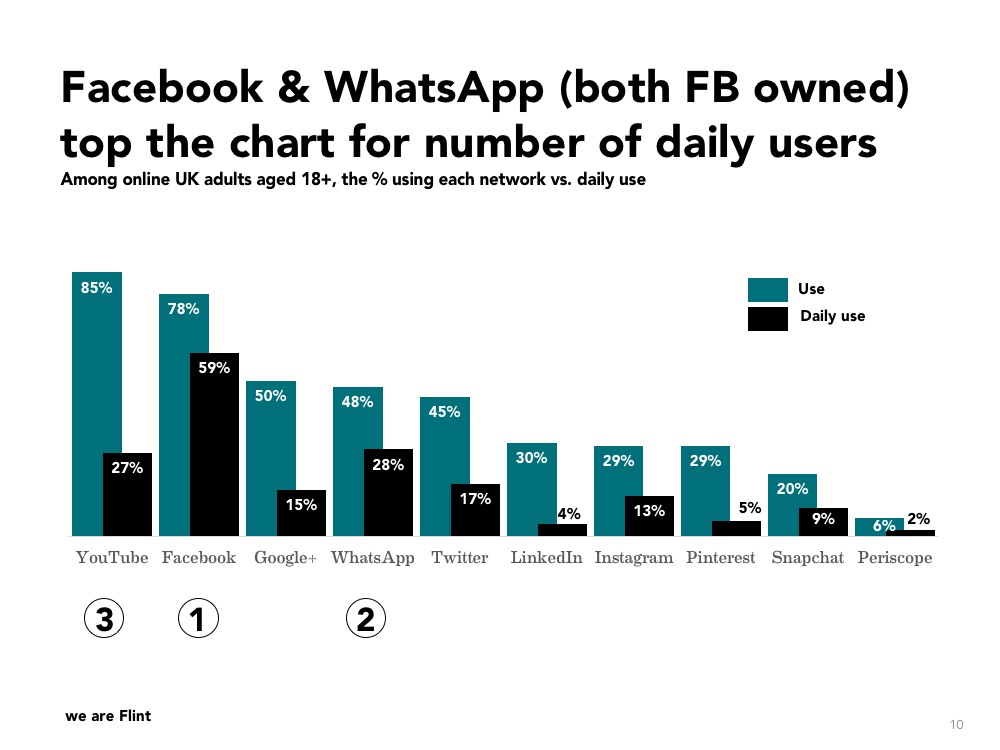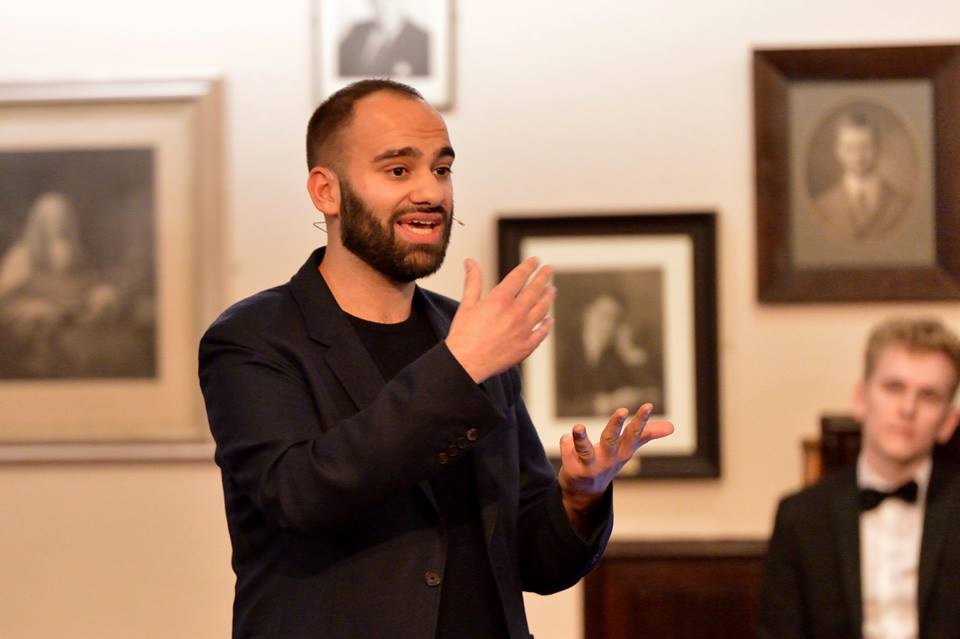The plethora of sensors being deployed to measure everything from heartbeats to household temperature is one clear driver of this. Our addiction to social media is another.
Research conducted by Cast From Clay shows that nearly all (95 percent) of online UK adults now use social media and nearly three-quarters (73 percent) use one or more social media networks on a daily basis.
The research shows clear generational divides. While a majority (61 percent) of 18 -29 year olds report using Snapchat for example, only 2 percent of those aged 65 and above have delved into the wonders of the still founder-owned app.

Snapchat is famous for dismissing a £1.8 billion offer from Facebook. WhatsApp’s previous owners weren’t so dismissive. With Facebook and WhatsApp (78 percent and 48 percent ever used), Facebook has a strong hold on the social media market.
When we take into account daily use, Facebook’s domination becomes even more pronounced. Nearly six in ten (59 percent) UK adults use Facebook on a daily basis with nearly three in ten (28 percent) UK adults using WhatsApp every day. As far as frequency of social media usage goes, these two apps are dominating.

The reason behind this study was to fill a gap in public data on UK-specific social media statistics after we went on the hunt for ourselves and came back empty handed. But in the process we found things we weren’t expecting.
One such finding was that your social class has a significant impact on your likelihood to use emerging or more niche social media. For example, while 36 percent of ABC1s use Instagram, only 22 percent of C2DEs report the same. For LinkedIn this is even more pronounced – 40 percent versus 17 percent respectively.
With a little more digging, and this time using a modified Kantar definition of theHaves and the Have nots, we found that the Have Nots (who almost by definition are excluded from society) are significantly more likely to be socially excluded online as well. In other words, social media is only social if you are socially included in the physical world.
Those findings are relevant for politicians and policy-makers, but they are especially relevant for PRs and marketeers. If you are running a campaign targeting C2DEs, perhaps an influencer marketing strategy on Instagram isn’t the right tool for the job.
Anyway, enough from me. You can view the profiles of each social media network (with methodology) here and an infographic here. Take a look and get in touch if you can’t find what you’re looking for. Remember to pop your email in the box below if you’d like to receive bits and bobs like this in the future.





